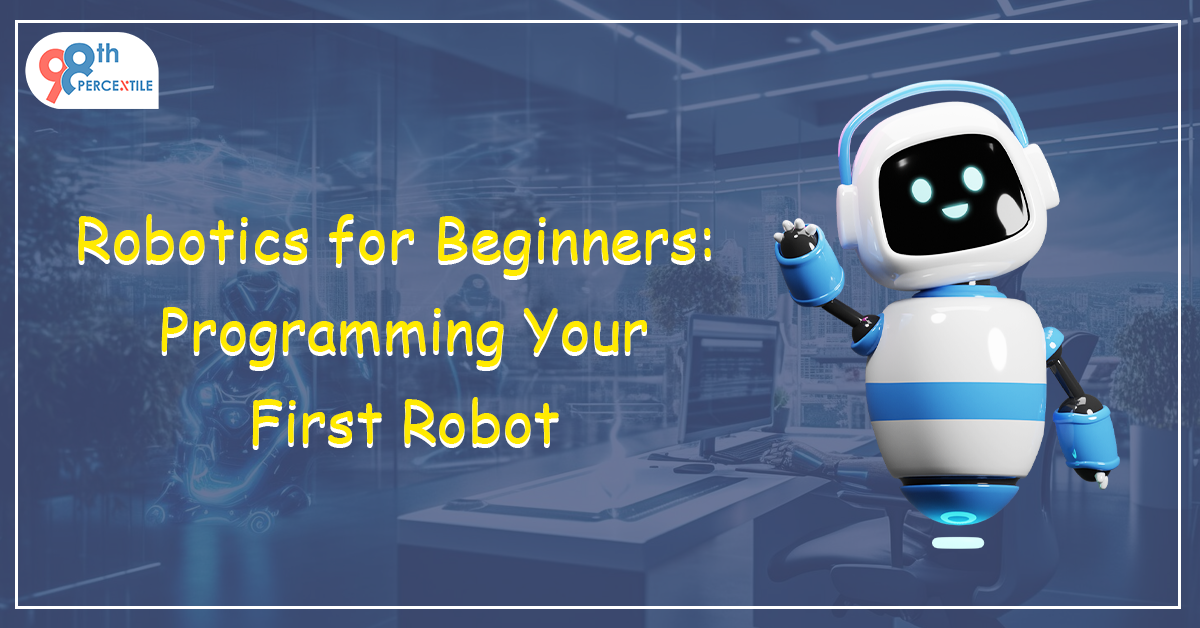Robotics is a field that has captivated the human imagination for decades. From the playful robots in science fiction to the automated machines that revolutionize industries, the world of robotics is diverse and exciting. If you're a beginner interested in diving into this captivating realm, this blog will serve as your guide to understanding the basics of robotics.
What is Robotics?
It is an interdisciplinary branch of engineering and science that focuses on designing, building, programming, and operating robots. AI robot is a mechanical or electrical device that can perform tasks autonomously or semi-autonomously. These tasks can range from simple actions like picking up objects to more complex functions like assembly line automation, medical surgery, or space exploration.
To get started with robotics, it's essential to understand the fundamental components of a robot
- Sensors: Sensors are like the robot's senses, providing it with information about its environment. Common sensors include cameras, proximity sensors, and touch sensors.
- Actuators: Actuators are responsible for the robot's movements and actions. Motors, wheels, and arms are examples of actuators.
- Controllers: The controller is the robot's "brain," which processes data from sensors and sends commands to actuators. Microcontrollers, like Arduino or Raspberry Pi, are often used for this purpose.
- Power Supply: Robots require a source of power, typically batteries, to operate.
Begin Your Child's Coding Adventure Now!
Types of AI Robots
There are various types of robots, each with unique characteristics and purposes:
1) Industrial Robots: These robots are commonly found in manufacturing and assembly lines, performing tasks like welding, painting, and packaging.
2) Mobile Robots: Mobile robots can move around their environment. They include autonomous vehicles, drones, and even robotic vacuum cleaners.
3) Humanoid Robots: These robots are designed to resemble humans in form and movement, making them suitable for tasks that require human-like dexterity and interaction.
Getting Started with Robotics: Step-by-step Guide
1) Learn Programming: Understanding programming is essential for training, controlling, and commanding robots. Start with languages like Python, which is beginner-friendly and widely used in robotics.
2) Explore Electronics: Familiarize yourself with the basics of electronics, including circuits, sensors, and actuators. Arduino and Raspberry Pi are excellent platforms for beginners.
3) Robotics Kits: Consider purchasing a robotics kit, which often includes components and instructions for building a robot. This hands-on experience can be immensely helpful for beginners.
4) Online Resources: There are plenty of online communities, forums, and tutorials where you can find guidance, share your experiences, and learn from experts in the field.
Choosing the Right Platform
Before you begin programming, it's crucial to choose the right robotic platform. If you're a beginner, consider using a robot kit or platform that provides you with the necessary hardware components and often includes software and documentation to get you started. Popular platforms for beginners include Arduino-based robots, Raspberry Pi-based robots, and LEGO Mindstorms.
Learning the Basics
To program your first robot successfully, you need to understand the basics of programming and robotics. Start by learning a programming language suitable for your platform. Python, Java, and C/C++ are commonly used languages in robotics. Use online resources to start learning. Explore 98thPercentile's coding programs to learn more about coding.
Understanding Sensors and Actuators
Robots interact with their environment through sensors and perform actions using actuators. Familiarize yourself with various sensors like ultrasonic, infrared, and light sensors, as well as actuators such as servos and motors. These components are essential for making your robot perceive and react to its surroundings.
Writing Code
Programming your robot involves writing code that tells it how to behave. Depending on your platform, you may use a specific Integrated Development Environment (IDE) tailored for your hardware. For instance, Arduino IDE is commonly used with Arduino-based robots, and the Raspberry Pi can be programmed using Python or C/C++ in various development environments.
Start with simple tasks, such as making your robot move forward and backward, turn, or react to sensor inputs. As you gain confidence, you can program more complex behaviors, like line following, obstacle avoidance, and even remote control through your smartphone.
Troubleshooting and Iteration
Robot programming is not always smooth sailing. You will encounter challenges and errors along the way. Debugging your code and iterating on your robot's design are crucial aspects of the learning process. Don't be discouraged by setbacks; they are opportunities to grow and improve your skills. There are a variety of online coding communities and platforms like stack overflow where you can find solutions to your programming errors and you too can give solutions to others.
Exploring Advanced Concepts
As you become more comfortable with programming and robotics, you can explore advanced concepts like computer vision, machine learning, and artificial intelligence to make your robot make decisions like humans and perform more complex tasks. These skills will open up doors to innovative and exciting applications.
Challenges and Future of Robotics
As you delve into the world of robotics, you'll encounter challenges, including complexity, cost, and safety. Nevertheless, the potential benefits are vast. Robotics has the power to transform industries, increase efficiency, and improve our quality of life.
The future of robotics is exciting, with developments in artificial intelligence, machine learning, and the integration of robots into our daily lives. From self-driving cars to medical robots performing precise surgeries, the possibilities are endless.
Book 2-Week Coding Trial Classes Now!
Robotics is an intriguing field with a wide range of applications and opportunities for innovation. As a beginner, you can embark on a fascinating journey by learning about the key components, understanding the types of robots, and acquiring the necessary skills to create and control robots. With dedication and a thirst for knowledge, you can explore the captivating world of robotics and contribute to the exciting future of this field. So, roll up your sleeves and get ready to build, program, and experiment with robots!
Book a free trial of coding class for your kid now!
Join 98thPercentile for more information.

 Students/Staff
Students/Staff Parents
Parents ElevatEd
ElevatEd.png?width=809&height=423&name=AI-Powered%20Learning%20Platforms%20for%20Coding%201%20(1).png)




-Nov-18-2025-03-57-47-3267-AM.png?width=360&length=360&name=401x226%20(6)-Nov-18-2025-03-57-47-3267-AM.png)



-Jul-22-2025-03-16-52-8797-AM.png?width=360&length=360&name=401x226%20(6)-Jul-22-2025-03-16-52-8797-AM.png)






